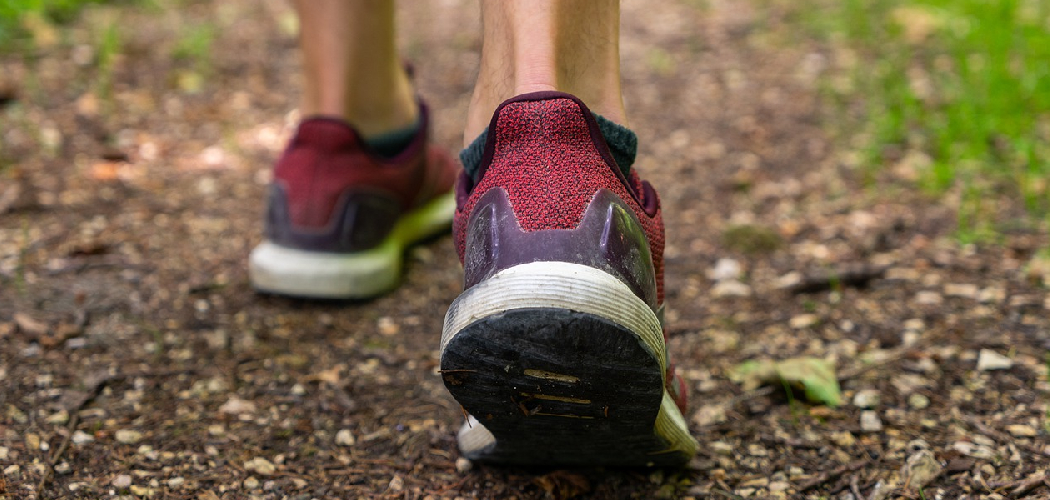Training shoes are designed to provide support and stability for your feet, ankles, and lower legs while you walk or run. However, different training shoes may be better suited for various activities. For example, if you intend to use your training shoes for walking long distances, you’ll want to choose a shoe with good cushioning to protect your feet from impact. Read on to learn more can training shoes be used for walking and choosing the right training shoe for walking.
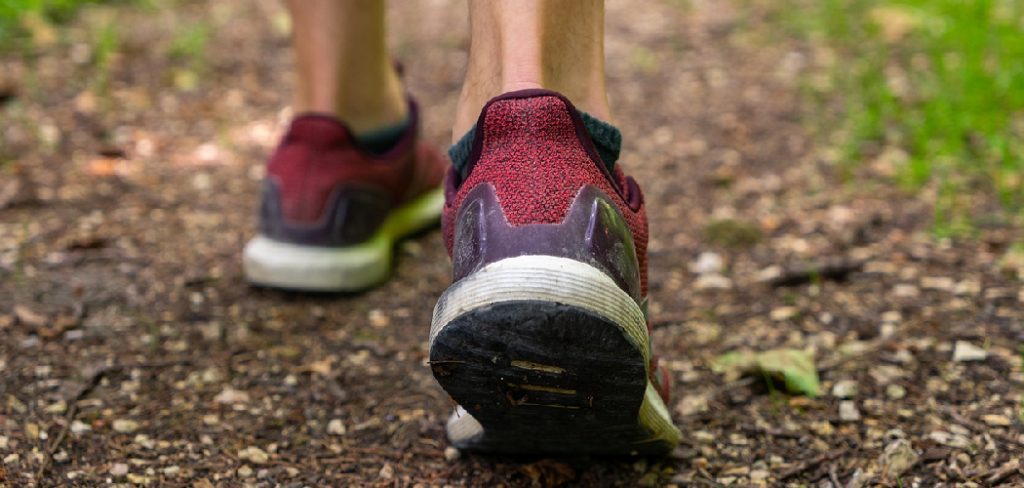
Try on several different pairs of shoes to find the best fit, and always walk in the shoes before you buy them to make sure they feel good when you walk.
Summary: Training shoes are designed to provide additional cushioning and support for high-energy activities such as running and jumping. They can also be used for other activities, including walking. Training shoes include features like extra cushioning in the heel and midsole, a firmer footing for stability, enhanced toe protection against stubbing, and breathable material for improved ventilation.
A Detailed Guide on Can Training Shoes Be Used for Walking
Training shoes are some of the best shoes for walking. They are specifically designed to provide support and cushioning for your feet, essential for a comfortable walk.
However, choosing the right training shoe for your foot type is essential. For example, if you have flat feet, you will need a different type of shoe than someone with high arches. Consult with a professional to find the perfect shoe for your feet.
Training shoes are also great for walking because they are typically very lightweight. This means that they won’t weigh you down as you walk and will make it easier to move your feet.
How to Choose Walking Shoes
When looking for shoes to walk in, you need to make sure that you choose the right ones. There are many different types of shoes made specifically for walking, and they will provide you with the support and comfort you need when you are out on a walk. If you try to use training shoes or running shoes as walking shoes, you may find that they are not as comfortable and may not provide you with the support you need.
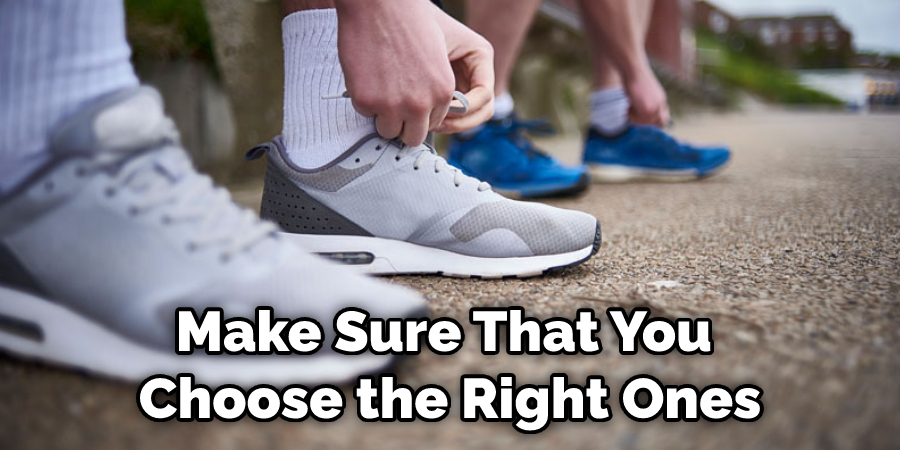
When choosing walking shoes, there are a few things that you should keep in mind.
- Upper: The upper of a walking shoe should be made from a durable material that can withstand wear and tear. It is also essential that the upper is comfortable and provides you with adequate ventilation.
- Midsole: The midsole of a walking shoe should be cushioned to provide you with comfort and support. It is also essential that the midsole is stable to support your foot correctly.
- Toebox: The toebox of a walking shoe should be roomy so that your toes have plenty of space to move around. It is also essential that the toe box is reinforced to protect your toes from being stubbed or hurt.
- Heel: The heel of a walking shoe should be cushioned to provide comfort and support. It is also essential that the heel is stable to support your foot correctly.
- Outsole: The outsole of a walking shoe should be made from a durable material that can withstand wear and tear. It is also essential that the outsole provides you with adequate traction so that you do not slip and fall while you are walking.
- Footbed & Insole: The footbed and insole of a walking shoe should be made from a soft material that can contour your foot’s shape. It is also essential that the footbed and insole provide adequate cushioning and support.
- Know your foot type: It is essential to know your foot type to choose the right walking shoe. For example, if you have a high arch, you will need a shoe with more support in the arch area. On the other hand, if you have a flat foot, you will need a shoe with more cushioning in the heel and forefoot areas.
- Please choose the right size: It is essential to choose a walking shoe that fits you properly. It would help if you always try on a shoe before buying it to make sure that it is the right size. In addition, it would be best to make that there is enough room in the toe box so that your toes have plenty of space to move around.
Things to Know Before Buying Training Shoes
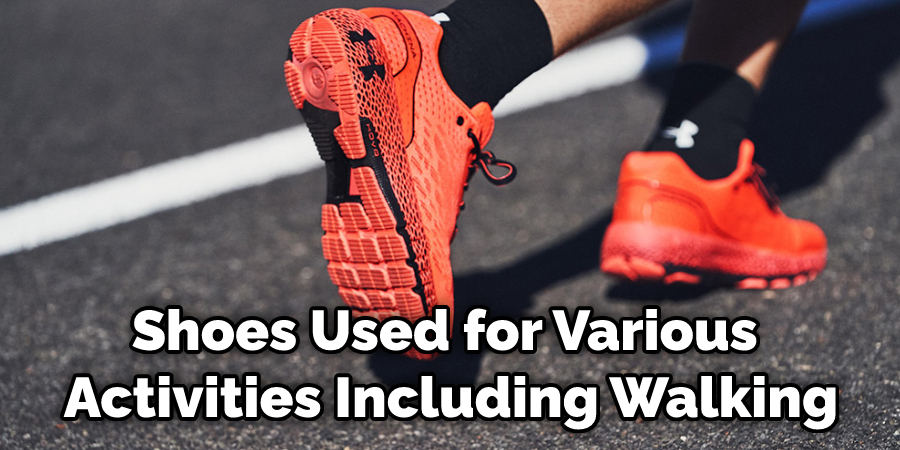
If you’re like most people, you probably think of training shoes as something that’s only meant for running or other high-impact activities. However, these days many manufacturers are creating shoes that can be used for various activities, including walking.
Before buying a pair of training shoes for walking, it’s essential to keep a few things in mind.
Lockdown and Lateral Support: When you’re walking, it’s essential to have shoes that provide lockdown and lateral support. This will help keep your foot in place and prevent any unwanted movement.
Cushioning: Walking can be hard on your feet, so you’ll want to look for good cushioning shoes. This will help absorb the shock of each step and reduce the amount of stress placed on your feet.
Don’t Pay Up for the Latest Models: You don’t need to buy the latest and greatest model of training shoes to get a good pair for walking. Many older models can provide just as much support and cushion as the newest ones.
Do Your Research: Not all training shoes are created equal. So before you purchase, it’s essential to do your research and read reviews from other walkers. This will help you find a pair that’s right for you.
Tread: When you’re walking, you’ll want to pay attention to the tread on your shoes. Look for shoes with a good amount of tread that can provide traction on various surfaces.
Now that you know what to look for in training shoes for walking, it’s time to start shopping! Be sure to keep these tips in mind, and you’ll be sure to find a perfect pair for you.
Difference Between Walking and Training Shoes
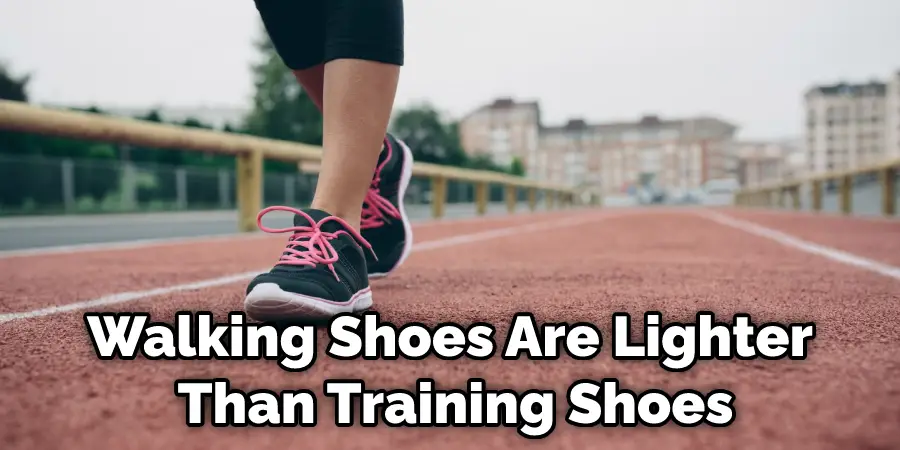
Design:
Walking shoes have a low-profile design and are lighter than training shoes. They also have flexible soles to enable easy movement. In contrast, training shoes have thicker soles and are heavier. They are designed for high-impact activities such as running or playing basketball.
Purpose:
The main purpose of walking shoes is, as the name suggests, walking. They provide comfort and support during this low-impact activity. On the other hand, training shoes are designed for activities that require more support and stability, such as running or jumping.
Construction:
Walking shoes are made of lighter materials and have a more flexible sole. This is to make them easier to move in. On the other hand, training shoes are constructed from sturdier materials and have a thicker sole. This makes them more durable and better suited for high-impact activities.
Traction:
Both walking shoes and training shoes have good traction. However, walking shoes may have better traction on some surfaces than others. For example, they may have more grip on pavement than on grass. On the other hand, training shoes are designed to provide traction on a variety of surfaces.
Cushioning:
Walking shoes typically have more cushioning than training shoes. They are designed for lower-impact activities, which don’t require as much support and stability. Conversely, training shoes have less cushioning, as they are meant for activities that put more strain on the feet.
Price:
Walking shoes are usually cheaper than training shoes. However, they are not designed for high-impact activities and therefore don’t need to be as durable or supportive.
So, can training shoes be used for walking? Of course, training shoes can be used for walking. However, it’s essential to choose the right type of shoe for your needs. For example, if you’re looking for a shoe that will provide good support and cushioning, then a training shoe might be a good option. But if you’re looking for something to wear casually, you might want to consider a different type of shoe.
What Do You Use Training Shoes for?
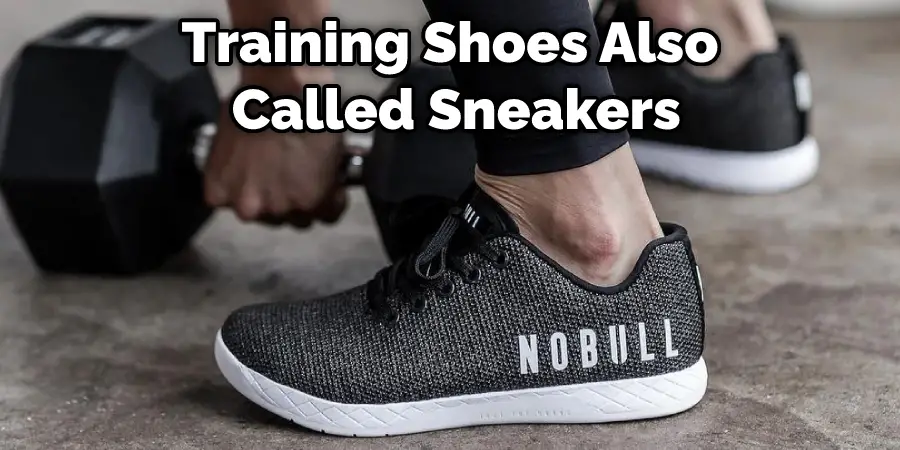
Training shoes, also called sneakers, are designed for various activities. Some are made for running, others for playing basketball or tennis. Still, others are designed explicitly for cross-training activities like aerobics or Zumba. Walking is a low-impact activity, so you might think that any type of shoe would be fine for walking.
However, certain features of training shoes make them better suited for walking than other types of shoes. For example, training shoes typically have more cushioning in the heel than different types of shoes. This can help absorb impact and protect your feet and ankles from stress injuries. Training shoes also usually have a wider toe box than other shoes. This can give your toes more room to move and can help to prevent blisters.
If you’re going to be doing a lot of walking, it’s probably best to invest in a pair of walking shoes. However, if you only walk occasionally, you can probably get away with wearing training shoes. Just choose a pair that fits well and provides the support and cushioning that your feet need.
You Can Check It Out to Walk to Not Crease Shoes
What Is the Difference Between Training Shoes and Running Shoes?
The main difference between training and running shoes is that running shoes are built for forwarding motion, while training shoes are designed to provide stability and support. This means that running shoes have a more curved shape that allows them to push off the ground more easily, while training shoes typically have a flatter sole and more padding in the heel and toe areas.
This doesn’t mean that you can’t use training shoes for running – many people do – but they may not be as effective as a pair of specifically designed running shoes. Similarly, you can use running shoes for light training, but they may not provide the same stability and support as a good pair of training shoes. So, if you’re looking for a couple of shoes to do a bit of everything, training shoes are the way to go.
You Can Check It Out to Is Hiking Shoes Good for Walking
Can I Use Running Shoes for HIIT Training?
HIIT, or high-intensity interval training, is a workout that alternates between short bursts of intense activity and rest periods. This type of workout can be very tough on your body, so it’s essential to have the correct type of shoes to protect your feet and joints.
Running shoes provide cushioned support for your feet during long-distance running. However, they may not be the best choice for HIIT training. Running shoes tend to be heavier than other types of athletic shoes, making them more challenging to move around in. They also don’t typically have the same level of grip and traction that you need for HIIT exercises that involve a lot of jumping and quick movements.
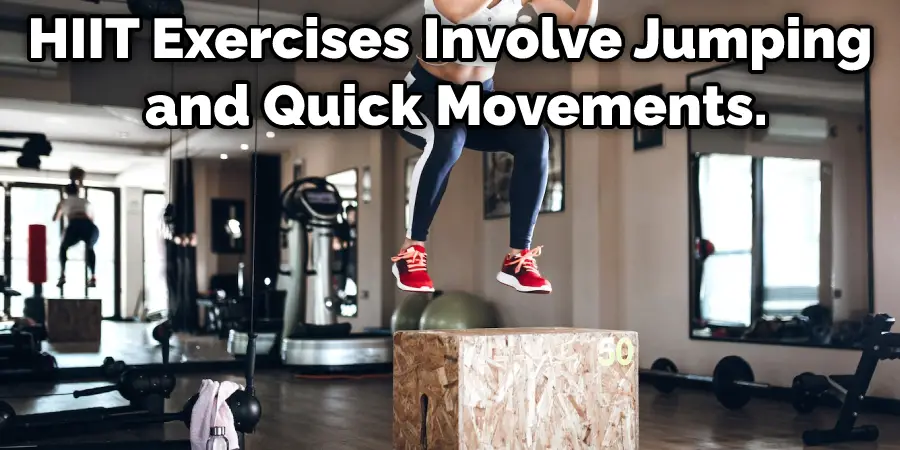
Conclusion
If you are looking for a training shoe that can double as a walking shoe, the Nike Metcon DSX Flyknit 2 might be ideal. This versatile sneaker is designed to handle high-intensity workouts, but it also provides enough cushioning and support to make it an excellent choice for everyday wear. In addition, the Flyknit material used in its construction makes it lightweight and breathable, so your feet will stay comfortable all day long. So if you’re looking for one shoe that can do it all, the Nike Metcon DSX Flyknit 2 is worth considering. We hope you have the answer can training shoes be used for walking.
You May Also Read: Is It Ok to Wear Running Shoes for Walking?

